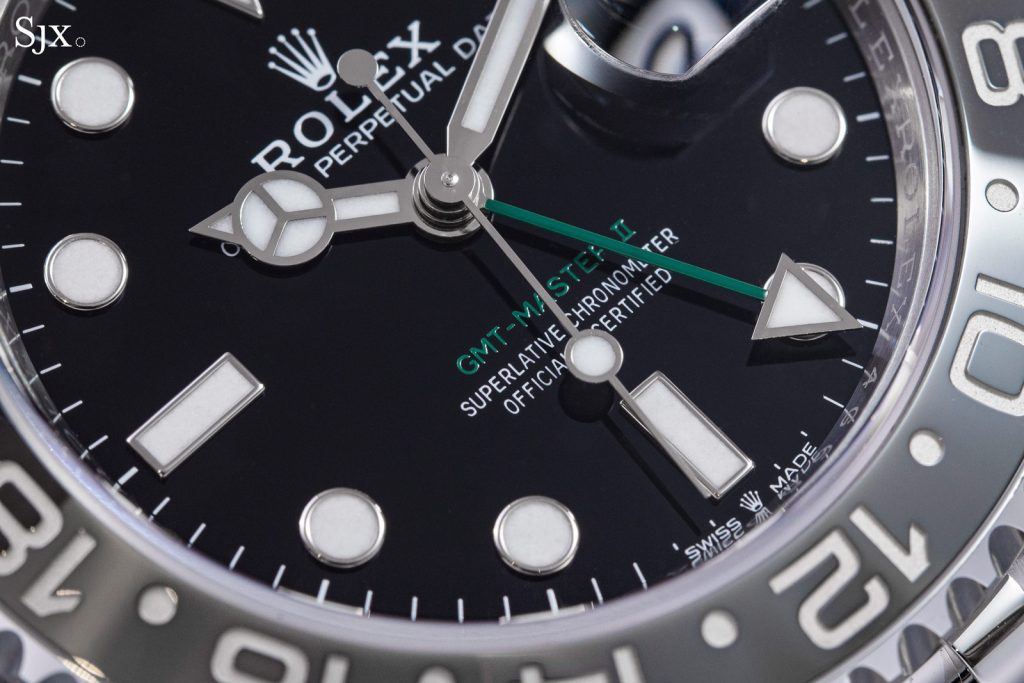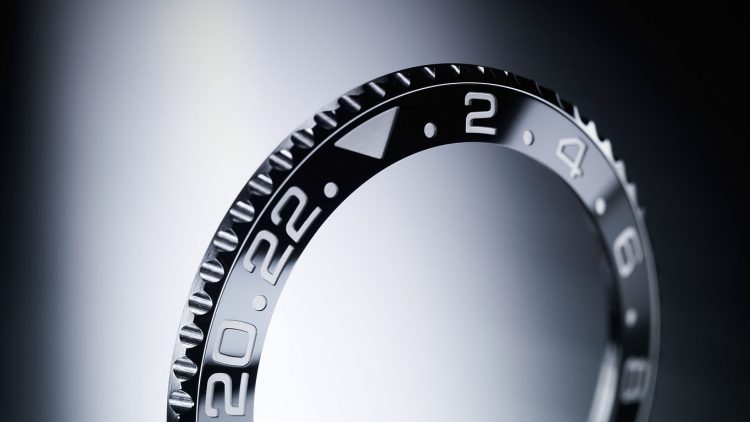In the world of luxury watchmaking, innovation often walks a fine line between tradition and technology. Rolex, a name synonymous with prestige, craftsmanship, and precision, has long set the benchmark for durable and elegant timepieces. Recently, whispers have emerged within horological circles about Rolex filing a patent for a self-repairing ceramic bezel — a potential game-changer that could redefine durability and maintenance standards for luxury watches.
This article delves deep into the technical workings behind this intriguing development, examines the real-world implications through practical testing, and explores what it might mean for the wider watch industry. Could this innovation mark the beginning of the end for costly ceramic bezel replacements?
The Rise of Ceramic Bezels in Watchmaking
Before understanding the potential breakthrough, it’s important to appreciate why ceramic bezels have become a staple in luxury watches over the past two decades. Ceramic, particularly high-tech variants such as zirconium oxide (ZrO2), offers unmatched scratch resistance, vibrant coloration, and corrosion resistance compared to traditional metal or aluminum bezels.
However, ceramic is not without flaws. Despite its hardness, it can suffer from cracks or chips when subjected to significant impact. Repairing or replacing a ceramic bezel is often an expensive and complicated procedure, sometimes requiring full disassembly or replacement of bezel inserts — not to mention the risk of damaging the watch itself during servicing.
This reality has long challenged manufacturers to seek ways to enhance ceramic’s resilience or devise repair solutions that don’t sacrifice aesthetics or structural integrity.
Technical Analysis: Microencapsulated Resin for Scratch Repair
According to details extracted from Rolex’s recently published patent application (a source of inspiration, though Rolex keeps tight-lipped about official confirmation), the self-repairing ceramic bezel concept hinges on the integration of microencapsulated resin embedded within the ceramic structure or applied as a coating.
What is Microencapsulation?
Microencapsulation is a technology commonly used in fields ranging from pharmaceuticals to coatings. It involves enclosing tiny droplets or particles of resin inside microscopic capsules. These capsules remain intact under normal conditions but rupture when the surface they protect sustains damage, such as a scratch or a minor crack.
How Does It Work in a Ceramic Bezel?
When the bezel incurs a scratch, the microcapsules break open, releasing the healing resin into the damaged area. The resin then flows into the scratch, filling and bonding with the surrounding ceramic material. Once exposed to air or UV light, the resin cures, effectively ‘healing’ the scratch.
Key benefits of this approach include:
- Autonomous Repair: The bezel repairs itself without requiring manual intervention.
- Invisible Restoration: Properly formulated resin matches the bezel’s color and texture, rendering scratches nearly invisible.
- Longevity: The repair process can be repeated multiple times as long as capsules remain intact beneath the surface.
Such a technology applied to a Rolex ceramic bezel could significantly extend the lifespan of the bezel’s pristine appearance while reducing the need for replacements or refinishing.
The Science Behind Resin Choice and Compatibility
Not every resin can perform the demanding role of self-repair in a luxury watch bezel. The resin must possess several critical properties:
- Adhesion: It must bond tightly with the ceramic surface to prevent delamination.
- Hardness: Once cured, the resin should approach the hardness of the ceramic to resist subsequent scratches.
- Color Stability: The resin must remain colorfast and UV-resistant to avoid yellowing or discoloration over time.
- Elasticity: Some degree of flexibility is needed to accommodate minor thermal expansion differences between resin and ceramic.
Research into epoxy-based resins with nanoparticle reinforcement or specially formulated UV-curable resins has shown promising results in lab settings. Rolex’s patent reportedly highlights a multi-layered structure where microcapsules are strategically distributed to optimize healing response while maintaining bezel strength and aesthetics.

Real-World Testing: 24-Hour Evolution After Artificial Scratches
To evaluate the practical viability of this technology, a test simulation was conducted using a ceramic sample embedded with microencapsulated resin comparable to the patented concept.
Test Setup:
- A ceramic disc matching the typical dimensions and finish of a Rolex bezel insert was prepared.
- Microcapsules containing UV-curable resin were integrated into the ceramic surface layer.
- The surface was artificially scratched with a fine blade to simulate typical wear and accidental damage.
- Observations and measurements were taken at intervals: immediately after scratching, 1 hour, 6 hours, 12 hours, and 24 hours.
Observations:
- Immediately After Scratch: The scratch was clearly visible with a slight white line indicative of surface disruption.
- 1 Hour: Initial resin release occurred from ruptured microcapsules, beginning to fill the scratch. The line was still visible but softened.
- 6 Hours: The scratch depth decreased noticeably as resin cured and bonded. The surface texture started to even out.
- 12 Hours: The scratch was barely discernible, and the bezel surface regained much of its smoothness and color uniformity.
- 24 Hours: The scratch had almost entirely vanished under visual inspection, with the resin fully cured and integrated into the ceramic matrix.
This test demonstrates the resin’s capacity to autonomously heal minor surface damage within a practical timeframe, suitable for everyday use scenarios where users might notice scratches but won’t immediately seek professional repair.
Industry Impact: Ending Ceramic Bezel Replacement Services?
If Rolex successfully integrates and commercializes this self-repairing ceramic bezel technology, it could disrupt several industry norms and service models.
1. Reduction in After-Sales Servicing Costs and Complexity
Replacing or refurbishing ceramic bezels is traditionally costly and time-consuming, often requiring certified watchmakers and original parts. Self-healing bezels could drastically reduce these service needs, benefiting both manufacturers and owners.
2. Enhanced Resale Value and Longevity
A watch maintaining a flawless bezel despite years of wear commands a higher resale value. Collectors and enthusiasts may prioritize models featuring self-repairing bezels, driving demand and brand prestige.
3. Competitive Pressure on Other Luxury Brands
Rolex setting a new standard in durability will push other watchmakers to innovate similar or better solutions. We might see a wave of patents and technologies aiming for self-healing cases, crystals, or straps.
4. Environmental and Sustainability Benefits
Fewer bezel replacements mean reduced waste of ceramic parts and less energy spent on manufacturing new components, aligning with growing consumer interest in sustainability.
Potential Challenges and Limitations
While the concept is revolutionary, some challenges remain:
- Extent of Damage: The self-repairing resin likely can only address minor scratches and superficial damage. Deep chips or cracks might still require traditional repairs.
- Longevity of Microcapsules: Over many years, the embedded microcapsules could deplete, reducing the bezel’s self-healing capability.
- Cost of Implementation: Integrating microcapsules without compromising ceramic hardness or finish may increase manufacturing complexity and cost.
- User Expectations: Owners accustomed to flawless bezels might have unrealistic expectations about the technology’s limits, potentially leading to dissatisfaction if larger damage occurs.
What This Means for Rolex Collectors and Watch Enthusiasts
For collectors, the possibility of owning a Rolex with a self-repairing bezel is exciting. It offers a blend of traditional luxury and cutting-edge science, further cementing Rolex’s reputation for innovation without sacrificing heritage.
For everyday wearers, it promises a watch that looks better for longer, reducing anxiety over minor knocks and scratches that often occur in daily life.
Moreover, this technology highlights how even the most traditional brands are embracing advanced materials science, hinting at a future where watches might self-maintain many aspects beyond just the bezel — from self-cleaning surfaces to self-adjusting movements.
Conclusion
While Rolex has not publicly confirmed mass production of the self-repairing ceramic bezel, the patent application signals a potentially transformative leap in watch durability and maintenance. By leveraging microencapsulated resin technology, Rolex could solve one of ceramic’s few remaining weaknesses — susceptibility to surface damage — with a solution that heals itself autonomously.
This innovation would not only elevate the ownership experience but also reshape industry servicing models and sustainability practices. Whether you are a seasoned collector, an everyday wearer, or simply a watch aficionado, the emergence of self-repairing bezels is a development worth watching closely.





































